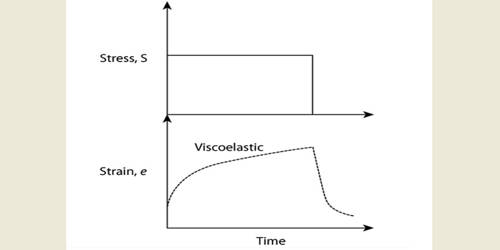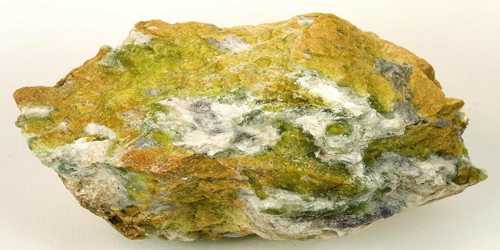Viscoelasticity is the behavior of materials with both fluid and elastic properties at the same time. It is the property of materials that exhibit both viscous and elastic characteristics when undergoing deformation. It is caused by temporary connections between fiber-like particles. The term “viscous” implies that they deform slowly when exposed to an external force. The term “elastic” implies that once a deforming force has been removed the material will return to its original configuration. Viscous materials, like water, resist shear flow and strain linearly with time when a stress is applied. Elastic materials strain when stretched and immediately return to their original state once the stress is removed. Typical examples of viscoelastic materials are spaghetti, shag (tobacco), a pile of worms moving through each other and (of course) polymers.
Viscoelastic materials have elements of both of these properties and, as such, exhibit time-dependent strain. Because of their shape, the particles can temporarily connect to each other which causes the elastic properties. Being viscoelastic means that the material to some extent both behaves like a liquid and a solid material and that it has a time-dependent strain. Viscoelastic behavior normally occurs at different time scales (relaxation times) in the same material. Whereas elasticity is usually the result of bond stretching along crystallographic planes in an ordered solid, viscosity is the result of the diffusion of atoms or molecules inside an amorphous material. On the other hand, due to their flexibility, they will easily slide along each other which causes the fluid properties. Polymers are always viscoelastic because they consist of long molecules that can be entangled with their neighbors.
Viscoelastic materials are those for which the relationship between stress and strain depends on time or, in the frequency domain, on frequency. Depending on the time scale of interest, a viscoelastic material could behave solid-like or fluid-like or a combination of both. Almost all of the biological tissues are viscoelastic and their viscoelastic mechanical properties are important in their characteristic functions. This is because constituents of tissue cells, extracellular matrices, structural proteins, and so on are viscoelastic. The study of viscoelasticity is also important in Biomechanics, since many biomaterials respond viscoelastically, for example, heart tissue, muscle tissue, and cartilage.
















